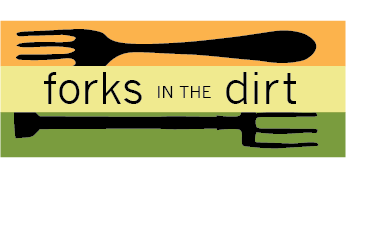
Growing your own salad greens is one of the easiest ways to kick start spring – or prolong fall growing. Greens are fast growing, nutritious, and delicious. And like every early spring after a long winter, it’s a great time to have something to nurture that will nurture you back in a few short weeks.
It’s also a great project to introduce kids to the basics of gardening as lettuce greens grow FAST- as close to instant gratification as growing food gets!
You don’t need much in the way of supplies to get started; just a container, some potting mix and a few seeds. If you happen to have a grow light, great- but once the Spring Equinox arrives, (or as the fall equinox tolls) even up north in Minnesota, a southern facing window will grow good greens. So let’s get planting!
Container

Any container with holes will do; so you’ll need a drip pan/saucer too. If you have used the pot before, please take the time to Disinfect it (wash in warm soapy water, then soak in a 1:9 bleach solution for 10+ minutes (I leave mine in the water for a few hours).
Potting Mix (NOT soil!)

Potting mix is sterile and gives baby seedlings the best chance of growing past the delicate first few days when they are prone to ‘damping off’ which are pathogens (fungi and bacteria) that break down the tiny stems. Many solid brands exist; Epsoma, Burpee, Miracle Grow, a smaller company, called Purple Cow Organics is available at small shops near me as well, like Bachmans, Hugo Feed Mill and Hedberg Landscape. Some of these businesses are offering pay ahead and curbside pickup during the Covid19 outbreak.
Seeds

There are so many lettuce ‘greens’ combinations it’s deliciously staggering! The basic types of lettuces are leaf lettuce, butterheads, crisp heads and romaine.
My best advice is just to grow what you will eat! But for the beauty of it, add in some reds too 😉 Lolla Rosa, Red Iceberg, Red Salad Bowl, Rouge D’Hiver ( I added scarlet kale in the video).

Try growing more salad items in the same pot- radishes, basil, dill, cilantro.
Kids love the flavor combos!
Many Seed companies sell a “Salad Mix” that include a variety of shapes and colors all maturing around the same time. Here’s a link to my favorite seed companies and their online + mailed seed catalogs for fun lettuce variety browsing!
Leaf lettuces:

These are typically pick and come again types that you’ll pick a few outer leaves and let the plant keep growing, these are best for a small container garden.
Mesclun:
This is baby leaf lettuce mix; traditionally of leaf lettuce, arugula, endive, chervil – now we’ve gone flavor crazy and add in spinach, kale, mizuna, Swiss chard, mustard greens, frisée, mâche, radicchio, sorrel… and I love it!

Butterhead:
These are the tender the bib lettuces, soft and sweet, great for wrapping . They do form a head, but its looser and you can harvest the outer leaves like other cut and come again types.
Crisphead:

Icebergs fall into this category. Typically having tighter heads and crisp structured leaves, these are best suited to grow to maturity and be taken as one full head, doing well as either the ‘last lettuce standing’ left in a container, or being transplanted out into a garden bed once the weather warms.
Before jumping onto the next variety, just remember how much more flavor all homegrown veggies have compared to their grocery store counterparts. I bet you’ll be pleasantly surprised by the taste and crunch of a homegrown ice berg!
Romaine:

Romaine’s outer leaves can be tough when you buy it from the grocery, but you can enjoy the outer leaves all season wen you grow it at home! If you can let it grow to a full head it is also amazing on the grill!
There are many other fast growing greens I love, from Mizuna, Cress, Mustard Greens etc. Even radishes grow happily with lettuces. Get as creative as you want, and enjoy the variety of flavors that grow well in a container!
Kale

A special word about kale, since I have a known addiction to this hardiest of garden greens, see this previous blog post for further proof. Please know (and consider) that you can transplant these out into the garden from the container and they will continue to grow and produce through fall’s frosts.
Get Growing

Most lettuce seeds need to be barely pushed into the soil. Some, like spinach, require a mere 1/2″ of soil covering them to germinate. Most germination will happen in a few day, so seeing seeds emerge 3-5 days after planting is a fast reward as well.
**Lettuces need on average Six Inches of Soil to grow solid roots.**
Light
We all know plants need light to grow, and lettuce greens are no exception, but they only require part sun, so a sunny window, as long as it’s not in the months surrounding the winter solstice, should grow just fine. If you have an indoor grow light, use it by all means!

The best part about growing in a small container is that you can move it. Eventually, being able to bring it outside, leaving it on a deck or balcony, after ‘hardening off’ the lettuce seedlings… If you have questions about seed starting in general check out my Seed Starting 101 blog.
I hope you try your hand at growing a little salad bar garden of your own! Let me know which are your favorite varieties, and of course ask any questions!
Dig In!
-Michelle






















































































































































